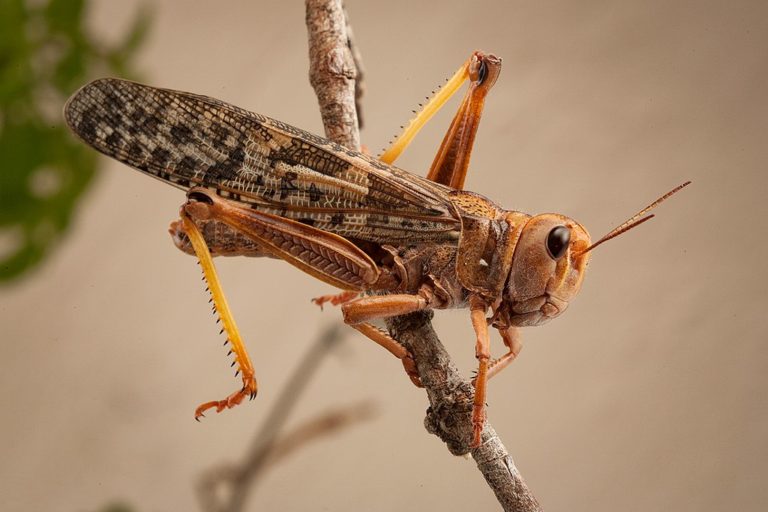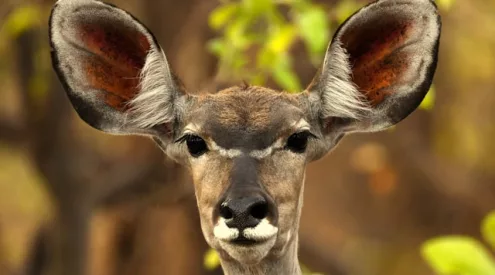A locust swarm of ‘biblical proportions’ has gripped large parts of the Karoo, which has just escaped the grips of a drought.
On 22 March 2022, Agri Eastern Cape was notified that the two helicopters spraying the swarms had been grounded following an instruction from the director of Disaster Management and Climate Change Directorate, Dr Ikalafeng Kgakatsi. Below is a video of a swarm moving through the Northern Cape.
There is widespread confusion regarding the rationale surrounding this decision, with no communication with teams on the ground, no communication as to what the environmental effects are or suggestions of alternatives to targeted spraying of locust swarms.
The brown locust
The brown locust (Locustana pardalina) has a recognised outbreak area of 250 000 square kilometres of the semi-arid Nama Karoo and Southern Namibia. Historically, plagues have developed where they have overrun entire parts of Southern Africa up to the Zambezi River.

The Brown Locust photographed in the Eastern Cape. Picture: Wikimedia Commons/ Piotr Naskrecki.
The first historical studies of the Karoo’s locusts go as far back as 1997, and the government’s first funded chemical control of locusts started as early as 1906.
Roger Price, Head of the Insect Ecology Division for the Agricultural Research Council writes that the brown locust is specifically adapted to periods of drought where ‘under favourable rainfall conditions over one or more summer seasons such outbreaks often develop simultaneously over a vast area of the Nama Karoo.’
The locust’s eggs can remain dormant in dry sand for extended periods and large swarms can emerge following high rainfall.
‘Plague locusts were declared as National Pests in South Africa in 1911 in one of the first legislations promulgated by the new Government of the Union of South Africa,’ writes Price.
A plague of ‘biblical proportions’
The current plague of locusts is said to be the largest ever recorded. Having already decimated crops in the Northern Cape, the swarm is wreaking havoc in the Karoo regions of the Eastern and Western cape. The video below shows a swarm of locusts moving through Steytlerville in the Eastern Cape.
The MEC for Agriculture in the Western Cape, Ivan Meyer, said that combating the locust infestation was instrumental for securing food security and rural livelihoods.
The Western Cape Department of Agriculture said the swarms were mostly affecting areas such as Calitzdorp, Ladismith and Oudtshoorn, putting increased pressure on farmers.
In the midst of the ‘largest outbreak recorded,’ the decision from the Disaster Management and Climate Change Directorate to halt the spraying of insecticide in the Eastern Cape has come under harsh scrutiny.
‘The rationale for this decision cannot be understood given the fact that we are currently experiencing the largest outbreak recorded,’ Peter Cloeter, president of Agri EC, told the Daily Maverick. ‘The continued aerial spraying in the areas with available poison has been deemed, by those in control on the ground, as the best option at the moment.’
The rationale for this decision was not elaborated on, something that has baffled farmers and agricultural organisations in the area.
Targeted spraying
The insecticide Sumi Alpha is a ‘synthetic Pyrethroid’ that is safe to apply and poses less environmental risk than compounds used in the past.
Locusts are targeted by task teams organised by farmers’ organisations who apply the insecticide to areas where the locusts have aggregated in dense swarms. Non-targeted species are reported to repopulate the sprayed area after a few weeks.
Nevertheless, the repeated application of the poison can have a negative impact on the rich diversity and endemic invertebrates and reptiles of the Nama-Karoo biome.
Alternative control methods
Before the government started stepping in in 1907, farmers had to mechanically control swarms by ‘beating, trampling and burning to protect crops and pastures from the ravages of locusts’.
The excavation of locust eggs in the soil has prevented swarming in past, but the disturbance of an ecologically sensitive area such as the Karoo could cause severe erosion problems.
In China, ducks are often used as a biological means to control locust swarms but this is probably more effective as a mitigation strategy.
With this in mind, biological strategies could be put in place to offset the effects of swarming in the future but for now, farmers are still trying to recover from the effects of drought while their fodder is ravaged by a swarm of locusts.
ALSO READ
New WildChoices list helps tourists choose ethical wildlife facilities
















